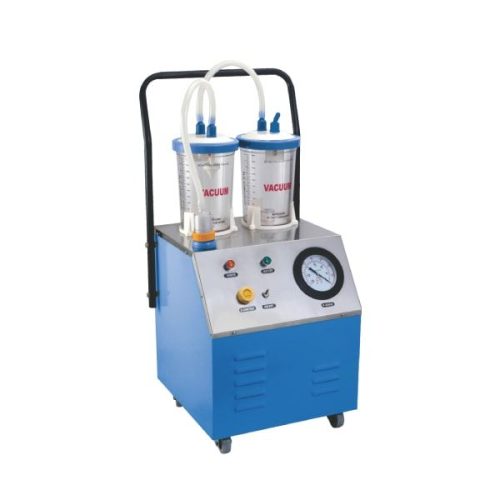Project Report For Suction Machine
Introduction
Project Report For Suction Machine is as follows.
Suction can be used to clear the airway of blood, saliva, vomit, or other secretions, allowing the patient to breathe normally. Suctioning can help avoid pulmonary aspiration, which can lead to lung infections. Suction is used in pulmonary hygiene to remove fluids from the airways, allowing for easier breathing and preventing the development of bacteria. Aspirators are little suction-producing devices.
Suction can be used in surgery to remove blood from the region being operated on, allowing surgeons to observe and work on the area. Suction can also be used to remove blood from the skull following an intracranial haemorrhage.
Suction devices can be mechanical hand pumps, battery-powered mechanisms, or electrically powered mechanisms. Suction is often delivered by suction regulators in many hospitals and other health institutions, which are linked to a central medical vacuum supply via a pipeline system. One sort of tip that may be added to a suction device is the plastic, stiff Yankauer suction tip. Another type of catheter is the plastic, nonrigid French or whistle tip catheter.

Types Of Suction Machine
- Manual Suction Devices – Manual devices require no electricity and are as easy as using a portable light bulb to remove mucus from your child’s nasal passages. They do not require power and are usually small and portable, so they are often used in emergencies. On the other hand, it might be challenging to continuously and properly employ manual suction devices over time.
- Static Vacuum Machines – Static machines have been the most popular machines for decades because they are reliable, effective, and consistent. On the other hand, the lack of portability leaves much to be desired. Fixed suction devices cannot treat patients on the move and can only provide emergency care within the four walls of a hospital.
- Portable Vacuums – Advances in vacuum and battery technology are making portable vacuums more popular. Lightweight, portable suction devices are advantageous for both patients and medical personnel.
Get Completely Custom Bankable Project Report
Market Potential for Suction Machine
The market for medical suction devices was worth USD 1 billion in 2021, and it is anticipated to increase at a CAGR of 4.6% from 2022 to 2030.
The growing prevalence of persistent respiratory conditions such as acute lower respiratory tract infections, obstructive pulmonary disease (COPD), and asthma, as well as an increase in the number of procedures, such as hoover assisted deliveries, where suction devices are commonly used, are driving market growth.
Furthermore, the rising demand for home healthcare and the falling price of these gadgets are making them more accessible, expanding the spread of these items. Such factors are projected to boost market expansion throughout the predicted period. the expansion of the medical suction device market since it comprises numerous difficulties that must be handled by draining the excessive secretions that are generated repeatedly into the individual’s system.
A large number of individuals worldwide suffer from asthma, necessitating the daily use of medical suction equipment to alleviate the symptoms produced by excessive mucus secretion. The significant improvements achieved by the medical business have pushed potential consumers to choose such advanced procedures that aid to deliver a better long-term result.
The key element driving its increased revenue share is the high cost of non-portable devices. In addition, the need for non-portable aspirators is rising as hospitals and clinics become more prevalent. These devices are typically utilised in dentist clinics, hospitals, and other healthcare institutions where patients do not require transportation.
As the number of emergency cases and operations increases, so will the need for non-portable suction equipment throughout the projection period. As a result, the rapid expansion of this market may be linked to an increase in the number of hospitals and clinics in both developed and developing countries that use these devices.

